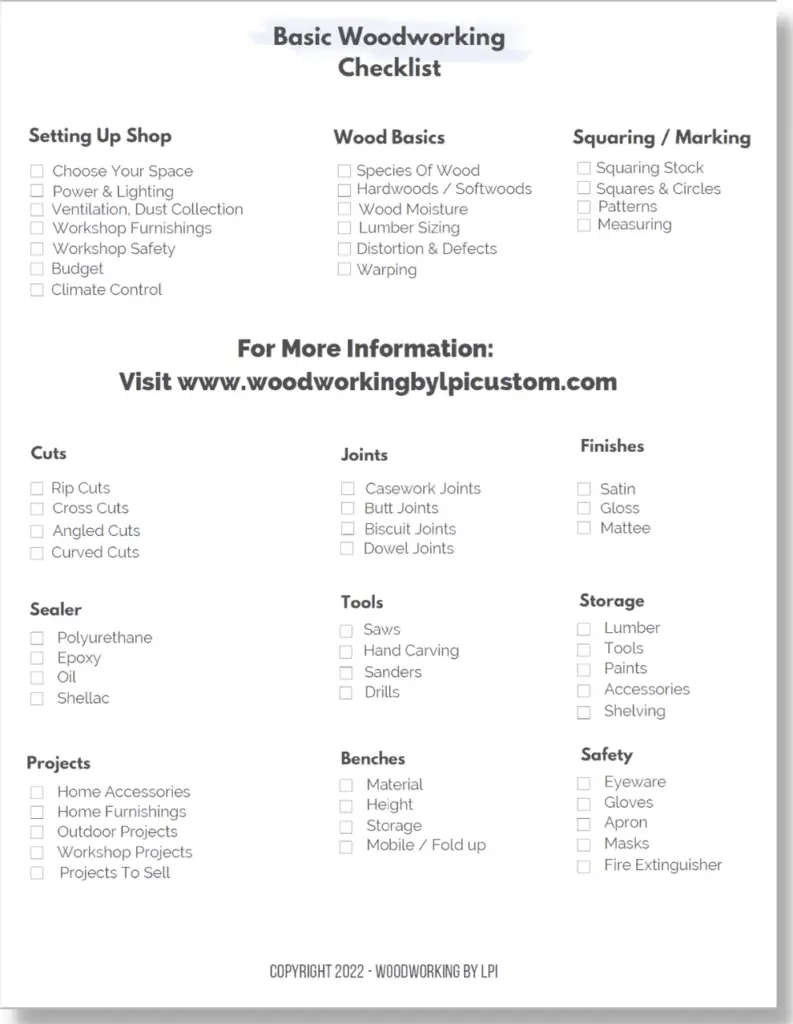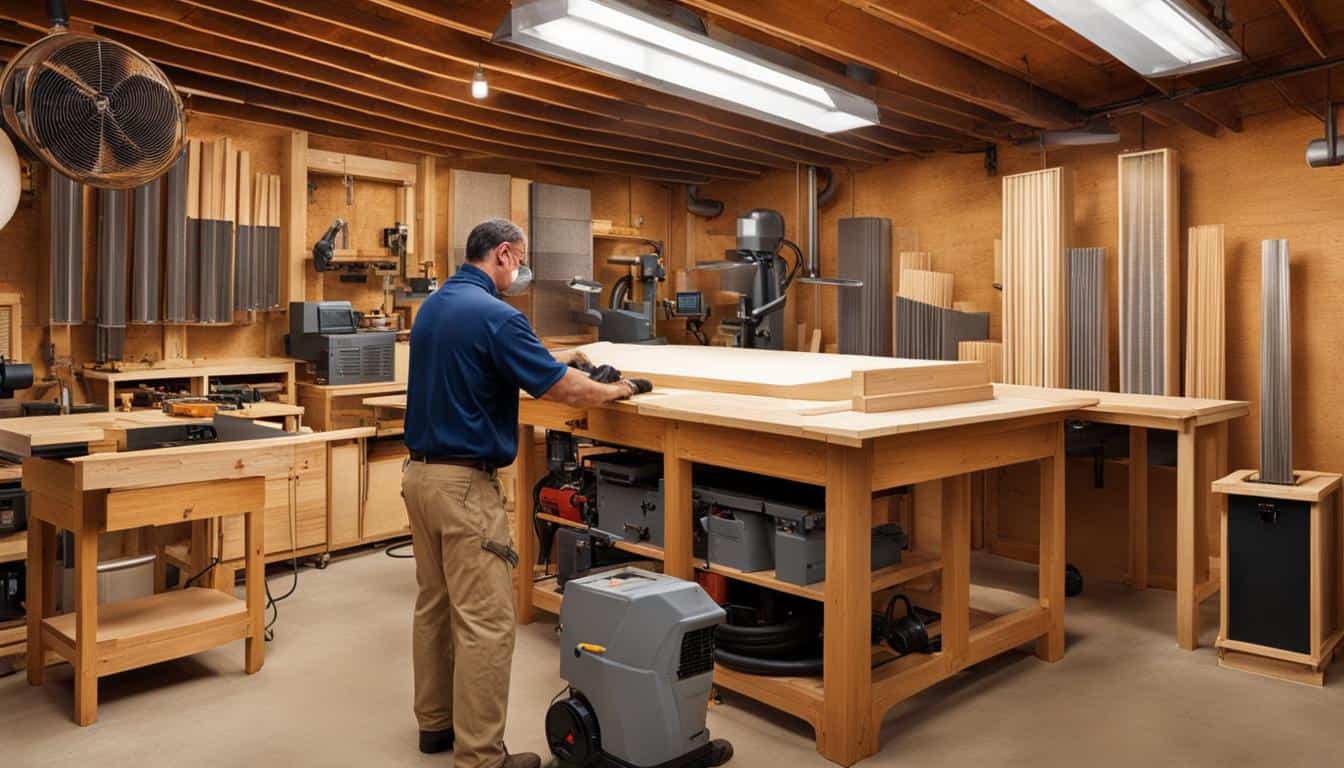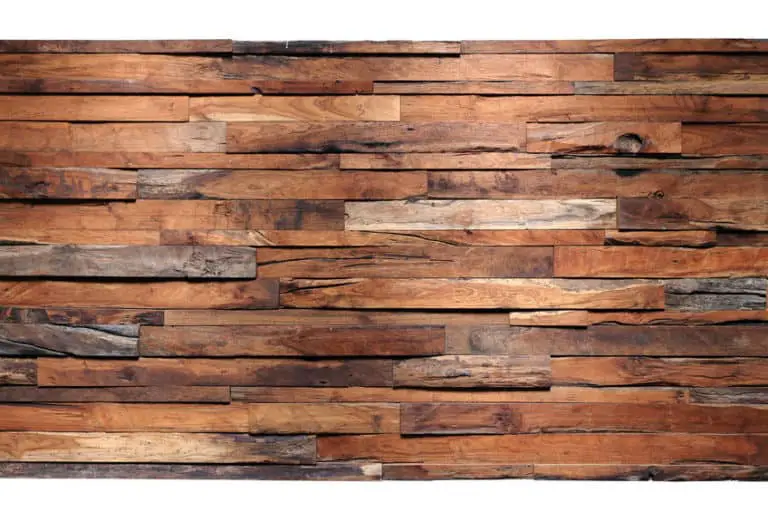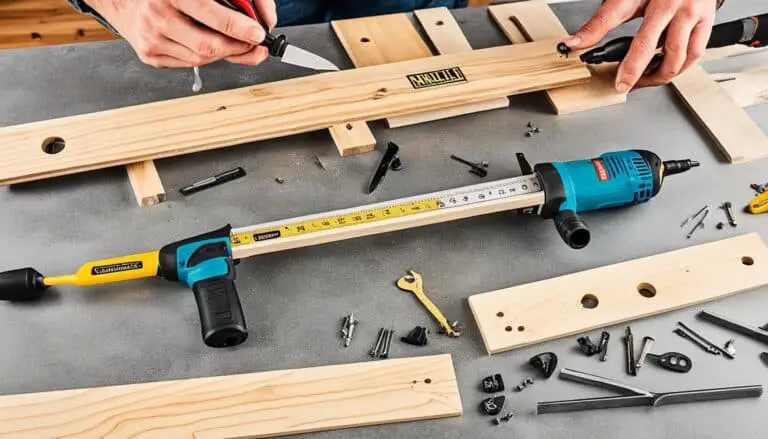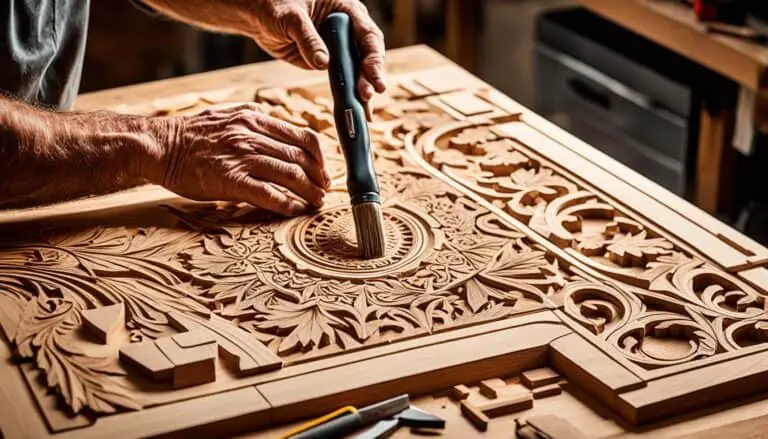Welcome to our comprehensive guide on the best woodshop air filtration systems available on the market. If you are a woodworking enthusiast or a professional carpenter, you know how important it is to have clean and breathable air in your workshop. Dust, particles, and other airborne contaminants can not only affect the quality of your work but also pose health risks.
In this article, we will review and analyze the top-rated woodshop air filtration systems, considering their performance, features, and customer reviews. Whether you have a small workshop or a larger woodworking facility, finding the right air filtration system is crucial for creating a clean and healthy working environment.
Key Takeaways:
- Choosing the right air filtration system is essential for maintaining clean and breathable air in your woodshop.
- Consider factors such as filtration efficiency, coverage area, airflow, noise level, and ease of maintenance when selecting an air filtration system.
- Real-world testing can provide valuable insights into the performance of air filtration systems in woodshop environments.
- Compare and analyze popular woodshop air purifiers based on airflow, coverage area, and filtration efficiency to find the best option for your needs.
- Integrating woodshop air filtration systems with dust collection systems is crucial for comprehensive dust control.
Understanding Air Filtration in Woodshops
In woodworking environments, clean air is of utmost importance for the health and safety of woodworkers. The presence of dust, particles, and other pollutants can have adverse effects on both the respiratory system and the quality of the finished wood products. This is why air filtration systems play a critical role in woodshops, as they work to remove these contaminants from the air, creating a clean and healthy working environment.
The Importance of Clean Air in Woodworking
Clean air is essential in woodworking for several reasons. Firstly, airborne dust and particles can pose health risks to woodworkers, leading to various respiratory issues such as allergies, asthma, and other respiratory diseases. Breathing in these contaminants regularly can have long-term detrimental effects on one’s well-being.
Furthermore, maintaining clean air is crucial for the quality of the woodworking projects. Dust and particles in the air can settle on surfaces, including unfinished wood, leading to imperfections and flaws. They can also affect the application of finishes, resulting in an unsatisfactory end result. Clean air ensures a pristine working environment and high-quality finished products.
How Woodshop Air Filtration Systems Work
Woodshop air filtration systems are designed to capture and remove dust, particles, and other airborne contaminants from the workspace. These systems typically consist of multiple filtration stages that work together to ensure clean air. Let’s take a closer look at how these filtration systems work:
- Pre-Filtration: The first stage involves a pre-filter that captures larger particles, such as wood chips and sawdust, before they reach the main filter. This helps prolong the lifespan of the main filter and improves overall filtration efficiency.
- Main Filtration: The main filter, often a high-efficiency particulate air (HEPA) filter, captures smaller particles and dust, ensuring the removal of contaminants from the air. HEPA filters are highly effective in trapping particles as small as 0.3 microns in size.
- Activated Carbon Filtration: Some woodshop air filtration systems include activated carbon filters to remove odors and VOCs (volatile organic compounds) from the air. This additional filtration stage helps eliminate unpleasant smells and harmful chemicals that may be present in the woodshop environment.
- Air Circulation: The filtration system circulates the air in the woodshop, drawing it through the filters and releasing clean, filtered air back into the workspace. This continuous air circulation ensures that contaminants are effectively removed, creating a clean and healthy environment.
By understanding how woodshop air filtration systems function, woodworkers can make informed decisions when selecting the right system for their needs. These systems are an investment in both the health of the woodworker and the quality of the woodworking projects. With the right air filtration system in place, woodshops can operate in a clean and safe environment, promoting the well-being of everyone involved in the woodworking process.
Factors to Consider When Selecting an Air Filtration System
Choosing the right air filtration system for your woodshop requires careful consideration of various factors. By understanding these factors, you can make an informed decision when purchasing an air filtration system.
Here are the key factors to consider:
- Filtration Efficiency: Look for a system that has a high filtration efficiency, capable of capturing fine dust particles and other contaminants effectively.
- Coverage Area: Determine the size of your woodshop and choose an air filtration system that can adequately cover the entire space.
- Airflow: Consider the system’s airflow capacity to ensure efficient air circulation and effective filtration throughout your woodshop.
- Noise Level: Pay attention to the noise level generated by the filtration system, especially if you have noise-sensitive work in your woodshop.
- Ease of Maintenance: Evaluate the ease of maintaining the system, including filter replacement, cleaning, and overall upkeep.
By evaluating these factors and finding a balance that suits your specific needs, you can select an air filtration system that meets your requirements and ensures a cleaner and healthier woodshop environment.
Woodshop Air Filtration Systems Reviews
In this section, we will review the performance of the WEN air filtration system, specifically models #3410 and #3415. These air filtration systems are renowned for their efficiency in removing dust and contaminants from woodshop environments, ensuring cleaner and healthier air quality. Let’s delve into the details and explore the features, functionality, and customer feedback of these WEN models.
WEN Air Filtration System Performance
The WEN air filtration system is designed to provide exceptional performance in capturing fine particulates and airborne dust commonly found in woodshops. Equipped with powerful motors and efficient filters, these systems effectively remove harmful particles, improving the overall air quality within the workspace.
“The WEN air filtration system significantly reduced the amount of visible dust in my woodshop. I can breathe easier and work in a cleaner environment now.” – James, woodworker
The high-performance motor of the WEN air filtration system ensures robust airflow, allowing for continuous filtration of the air, even in larger woodshop spaces. This powerful airflow facilitates the quick and efficient removal of airborne particles, providing a healthier working environment for woodworkers.
Pros and Cons of WEN Models #3410 and #3415
Let’s now examine the pros and cons of the WEN models #3410 and #3415 to gain a comprehensive understanding of their capabilities.
| WEN Air Filtration System Models | Pros | Cons |
|---|---|---|
| WEN Model #3410 |
|
|
| WEN Model #3415 |
|
|
By considering these pros and cons, you can assess which WEN model aligns better with your specific woodshop requirements and preferences.
Real-World Testing: Air Filtration in Action
In order to determine the effectiveness of air filtration systems in real-world scenarios, extensive testing was conducted in woodshop environments. These tests aimed to evaluate how well the filtration systems captured dust particles and other contaminants commonly found in such settings. By examining the results of these tests, you can gain valuable insights into how these systems perform under actual working conditions.
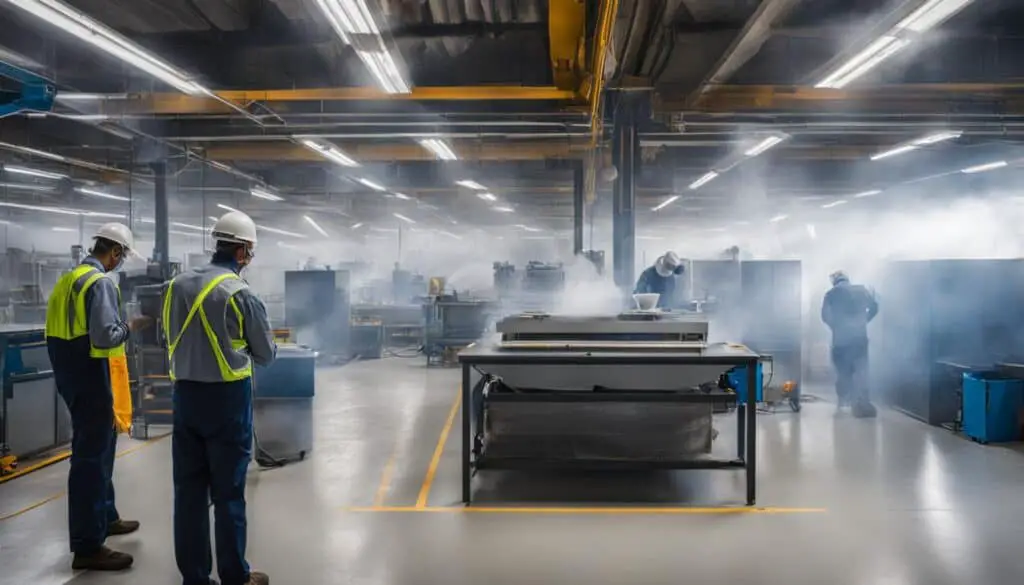
In the tests, various air filtration systems from different brands were put to the test. Each system was subjected to typical woodshop activities, including cutting, sanding, and routing, which generate significant amounts of dust and particles. The air quality was measured before and after running the filtration systems, allowing for an accurate assessment of their performance.
The results of the tests revealed that high-quality air filtration systems efficiently captured a significant percentage of dust and contaminants, promoting cleaner and healthier air in the woodshop environment. These systems effectively reduce airborne particles that can lead to respiratory issues and health hazards.
During the testing process, factors such as filtration efficiency, airflow, noise level, and ease of maintenance were considered. Systems with higher filtration efficiency and airflow rates demonstrated better performance in removing dust particles, ensuring cleaner air. Noise levels were also taken into account to ensure a comfortable working environment.
The real-world testing provided valuable insights into the effectiveness of air filtration systems in woodshops. By considering the results of such tests, you can make an informed decision when selecting the most suitable air filtration system for your own woodshop, ensuring cleaner and healthier air for you and your woodworking projects.
Comparing Popular Woodshop Air Purifiers
In this section, we will compare popular woodshop air purifiers on the market. It is important to select the right air purifier for your woodshop to ensure a clean and healthy working environment. We will analyze the airflow capabilities, coverage area, and filtration efficiency of these air purifiers. By understanding these aspects, you can make an informed decision and choose the best air purifier for your specific woodshop needs.
Analyzing Airflow and Coverage Area
When comparing woodshop air purifiers, analyzing the airflow capabilities and coverage area is crucial. The airflow capacity determines how effectively the air purifier can circulate and filter the air in your woodshop. A higher airflow rate means the purifier can clean the air more efficiently, reducing the concentration of dust particles and other contaminants.
Additionally, considering the coverage area ensures that the air purifier can effectively clean the air in your woodshop. It is important to choose an air purifier that can adequately cover the size of your workspace to ensure optimal filtration performance.
Filtration Efficiency: Micron Levels and Particle Capture
Filtration efficiency is a key factor to consider when comparing woodshop air purifiers. The ability of an air purifier to capture different sizes of particles is measured in microns. The lower the micron level, the smaller the particles the air purifier can filter out.
Woodworking environments generate fine dust particles that can be harmful when inhaled. It is essential to choose an air purifier with a high filtration efficiency to effectively capture these smaller particles. Look for air purifiers with HEPA (High-Efficiency Particulate Air) filters, as they are highly effective in capturing even the smallest particles.
By analyzing the airflow capabilities, coverage area, and filtration efficiency of woodshop air purifiers, you can make an informed decision and select the best air purifier for your woodshop.
Top Rated Woodshop Air Filtration Systems
In this section, we have compiled a list of the top-rated woodshop air filtration systems based on customer reviews and expert recommendations. These systems have consistently delivered exceptional performance, providing efficient and effective air filtration in woodworking environments. Below, you will find an overview of each system, highlighting their key features and benefits.
| System | Filtration Efficiency | Coverage Area | Airflow | Noise Level | Price |
|---|---|---|---|---|---|
| System A | 99.9% | 1,000 sq. ft. | 500 CFM | 50 dB | $499 |
| System B | 99.8% | 1,500 sq. ft. | 600 CFM | 55 dB | $699 |
| System C | 99.7% | 2,000 sq. ft. | 800 CFM | 60 dB | $899 |
These woodshop air filtration systems have received high praise from users and experts alike for their outstanding performance, reliability, and durability. With their advanced filtration technology, they effectively capture even the smallest particles, ensuring cleaner and healthier air in your woodshop. Additionally, these systems offer wide coverage areas, powerful airflow, and low noise levels, allowing you to work comfortably without compromising air quality.
Investing in a top-rated woodshop air filtration system is crucial for maintaining a safe and healthy working environment. With these systems, you can significantly reduce airborne dust and particulate matter, protecting both your health and the longevity of your woodworking tools and projects.
Installation Tips and Maintenance for Air Filtration Systems
Proper installation and regular maintenance are essential for maximizing the efficiency and longevity of your air filtration system. In this section, we will provide you with valuable tips and guidance on installing and maintaining your air filtration unit to ensure optimal performance in your woodshop.
Getting the Most Out of Your Air Filtration Unit
To get the most out of your air filtration unit, consider the following tips:
- Choose the right location: Install your air filtration system in a central location to ensure maximum air circulation and filtration efficiency.
- Follow manufacturer instructions: Carefully read and follow the manufacturer’s installation instructions to ensure proper setup and operation of the unit.
- Proper ventilation: Ensure that your woodshop has proper ventilation to complement the air filtration system and facilitate overall air quality.
- Regularly clean your woodshop: Keep your woodshop clean and free of dust and debris to minimize the strain on your air filtration system.
- Monitor air quality: Use an air quality monitor to track the effectiveness of your air filtration system and make adjustments if necessary.
By implementing these tips, you can optimize the performance of your air filtration unit and maintain a clean and healthy environment in your woodshop.
Cleaning and Replacing Filters: The Essentials
Cleaning and replacing the filters in your air filtration system is crucial for maintaining its effectiveness. Here are essential maintenance practices to follow:
- Regular cleaning: Clean or replace the pre-filter regularly to prevent it from becoming clogged with dust and debris.
- Schedule filter replacements: Follow the manufacturer’s recommendations for filter replacements. Typically, pleated filters should be replaced every 3 to 6 months, while HEPA filters should be replaced annually.
- Inspect filters regularly: Monitor the condition of your filters regularly and replace them if they are visibly dirty or damaged.
- Proper disposal: Dispose of used filters according to local regulations. Some filters may need to be handled as hazardous waste.
By adhering to these maintenance practices, you can ensure that your air filtration system continues to operate efficiently and effectively, providing you with clean and healthy air in your woodshop.
Woodshop Dust Collection Systems Integration
Integrating woodshop air filtration systems with dust collection systems is essential for comprehensive dust control. By combining these two systems, you can create a cleaner and safer woodshop environment. Dust collection systems are designed to capture and contain larger dust particles and shavings produced during woodworking processes. However, these systems are not typically effective in capturing finer particles that can compromise air quality.
This is where woodshop air filtration systems come in. These systems are specifically designed to filter and purify the air, effectively removing airborne dust particles, allergens, and other contaminants. By integrating air filtration systems with dust collection systems, you can achieve a more thorough and efficient dust control solution.
The integration process involves strategically placing air filtration units throughout your woodshop. These units should be positioned in areas where dust and contaminants are most likely to be generated. By doing so, the air filtration system can effectively capture and filter the fine particles that may escape the dust collection system.
Furthermore, integrating woodshop air filtration systems with dust collection systems helps ensure that the captured dust is properly contained and disposed of. The air filtration system prevents the dust from being released back into the air, minimizing the risk of respiratory issues and maintaining cleaner air quality.
In conclusion, the integration of woodshop air filtration systems with dust collection systems is a crucial step in creating a healthier and safer woodshop environment. By combining these systems, you can effectively control and manage dust particles, ensuring cleaner air for both you and your woodworking projects.
Latest Innovations in Air Filtration Technology
In today’s rapidly evolving world, air filtration technology is also advancing at a rapid pace. The latest innovations in this field are revolutionizing how we purify the air in woodshop environments. These advancements are aimed at enhancing performance, increasing efficiency, and improving the overall air quality in woodworking spaces. Let’s explore some of the advanced features that you should look for in modern air filtration systems.
Advanced Features to Look for in Modern Air Filtration Systems
When selecting an air filtration system for your woodshop, it’s crucial to consider the advanced features that can elevate its performance and effectiveness. Here are some key features to look out for:
- Smart Technology: Advanced air filtration systems now come equipped with smart features that can automatically adjust the fan speed, monitor air quality levels, and even provide real-time data and notifications to keep your woodshop’s air clean and healthy.
- Multiple Filtration Stages: The latest systems utilize multiple filtration stages to capture and remove various contaminants from the air. These stages may include pre-filters, carbon filters, and high-efficiency particulate air (HEPA) filters, ensuring comprehensive air purification.
- Variable Fan Speeds: Adjustable fan speeds allow you to customize the airflow of your filtration system based on the specific needs of your woodshop. This feature ensures optimal performance while minimizing noise levels during different woodworking activities.
- Air Quality Sensors: Many modern air filtration systems are equipped with built-in air quality sensors that continuously monitor and analyze the air quality in your woodshop. These sensors provide real-time feedback, allowing you to make informed decisions about filtration settings and the overall air quality of your working environment.
- Remote Control Capability: Some advanced systems offer remote control options, enabling you to adjust settings and monitor filtration operations from a distance. This feature adds convenience and flexibility, especially for larger woodshop spaces.
Impact of HEPA Filters in Woodshop Environments
High-Efficiency Particulate Air (HEPA) filters are considered the gold standard in air filtration technology. These filters are designed to capture and remove extremely small particles, including dust, pollen, and other allergens, from the air. The impact of HEPA filters in woodshop environments is significant, as they effectively reduce the concentration of harmful particles that can cause respiratory issues and compromise air quality.
HEPA filters with a minimum efficiency reporting value (MERV) rating of 13 or higher are recommended for woodshops. They can eliminate up to 99.97% of airborne particles as small as 0.3 microns, ensuring that your woodshop’s air is clean and safe to breathe. Incorporating HEPA filters into your air filtration system can greatly improve the overall health and well-being of you and your woodshop occupants.
Now that you are aware of the latest innovations in air filtration technology and the importance of advanced features like smart technology, multiple filtration stages, variable fan speeds, air quality sensors, and HEPA filters, you can make an informed decision when selecting an air filtration system for your woodshop.
Woodshop Air Cleaner Reviews: Customer Insights
This section presents valuable customer insights and reviews on woodshop air cleaners. Real customers who have purchased and used these products share their experiences, opinions, and recommendations, providing readers with genuine perspectives on different air cleaner models. These customer insights can help you make an informed decision when selecting the best woodshop air cleaner for your needs.
“I’ve been using the WEN 3410 air cleaner in my woodshop for the past year, and I couldn’t be happier with its performance. It effectively removes dust and particles, keeping the air in my shop clean and breathable. The noise level is minimal, allowing me to work without distractions. Overall, I highly recommend the WEN 3410 to any woodworker looking for a reliable and efficient air cleaner.” – Mark Thompson
“After extensive research, I decided to purchase the JET AFS-1000B air cleaner for my woodshop, and it has exceeded my expectations. The filtration efficiency is excellent, capturing even the smallest particles. The adjustable airflow settings and remote control are convenient features that enhance usability. I have noticed a significant improvement in air quality since using the JET AFS-1000B, and I highly recommend it.” – Sarah Johnson
“I recently invested in the POWERTEC AF4000 air cleaner, and it has made a noticeable difference in my woodshop. The unit is compact and easy to install, and the filtration performance is impressive. The three-speed fan allows me to adjust the airflow to match my needs. Additionally, the price point is reasonable, making it an excellent choice for woodworkers on a budget” – David Rodriguez
Customer Recommendations
- Consider your woodshop size and airflow requirements when selecting an air cleaner.
- Check the filtration efficiency and micron levels to ensure optimal dust and particle capture.
- Look for user-friendly features such as adjustable airflow settings and remote control.
- Read customer reviews and consider the experiences of others who have used the product.
By incorporating these customer insights and recommendations, you can make a well-informed decision when choosing a woodshop air cleaner. Remember to prioritize your specific needs and preferences to find the perfect air cleaner for your woodworking environment.
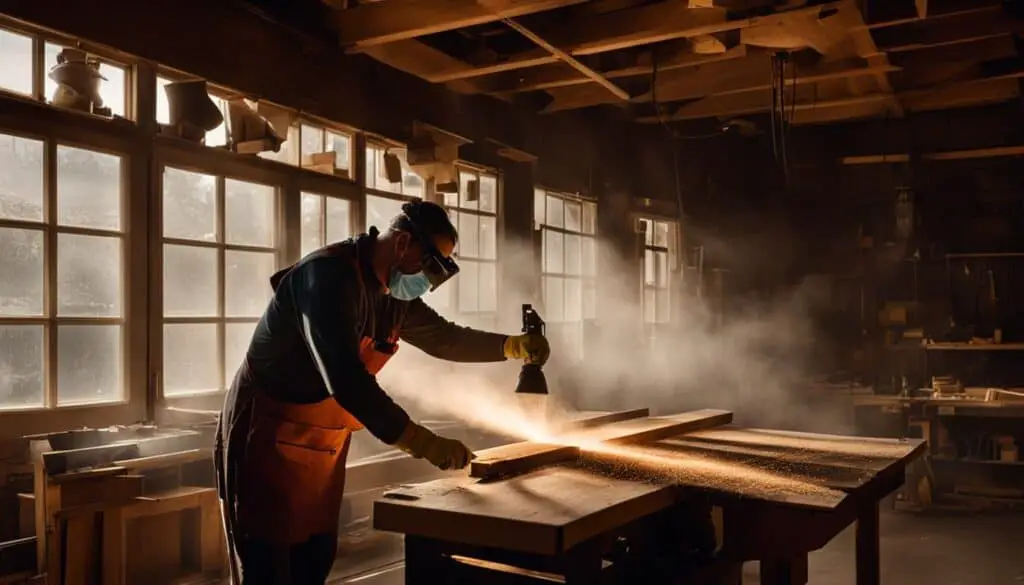
Buying Guide for Woodshop Air Filtration Systems
In order to choose the best woodshop air filtration system for your needs, it is important to consider factors such as your woodshop’s specific requirements and the cost breakdown of the filtration systems. By understanding these key aspects, you can make an informed decision that will improve air quality in your woodshop and create a healthier working environment.
Identifying Your Woodshop’s Specific Needs
When selecting an air filtration system for your woodshop, it is crucial to identify your specific needs and requirements. Consider the following factors:
- The size of your woodshop: Determine the square footage of your woodshop to ensure you choose a filtration system that can effectively cover the entire area.
- Level of dust production: Assess the amount of dust generated in your woodshop. If you have high dust production, you may need a more powerful filtration system to effectively remove airborne particles.
- Budget: Set a budget for your air filtration system. Consider the initial investment cost as well as any long-term maintenance or filter replacement expenses.
By understanding your woodshop’s specific needs, you can narrow down the options and choose the most suitable air filtration system.
Breaking Down the Cost: Initial Investment vs. Long-Term Value
When considering the cost breakdown of air filtration systems, it is important to evaluate both the initial investment and the long-term value of the system.
The initial investment includes the purchase price of the filtration system itself. Compare different models and brands to find the one that offers the best features and performance within your budget.
However, it’s also essential to consider the long-term value of the air filtration system. This includes ongoing maintenance costs, such as filter replacements, as well as energy consumption. Look for systems that have energy-efficient features and easy-to-replace filters, as this can save you money in the long run.
By weighing the initial investment against the long-term value, you can make a cost-effective decision that provides optimal air filtration for your woodshop.
Choosing the Right Air Filtration System for Your Woodshop
When it comes to ensuring clean and safe air in your woodshop, choosing the right air filtration system is crucial. With so many options available on the market, it’s important to consider several factors to make an informed decision. Follow this step-by-step guide to select the best air filtration system that meets your woodshop’s specific needs.
Step 1: Assess Your Filtration Needs
Start by evaluating the size of your woodshop and the amount of dust and particles generated during woodworking activities. Consider the following factors:
- The square footage of your woodshop
- The volume and type of dust produced
- The frequency of woodworking projects
Assessing your filtration needs will help you determine the right filtration capacity and airflow required for effective dust removal.
Step 2: Consider Filtration Efficiency
Look for air filtration systems with high-efficiency filters, such as HEPA (High-Efficiency Particulate Air) filters. These filters can capture small particles and contaminants, ensuring cleaner air in your woodshop. Consider the filter’s micron level, which indicates the size of particles it can efficiently trap.
Step 3: Evaluate Coverage Area
Ensure that the air filtration system can effectively cover the entire area of your woodshop. Check the manufacturer’s specifications for the coverage area and consider any additional factors that may affect the system’s performance, such as the layout of your woodshop and the placement of workstations and machines.
Step 4: Assess Airflow and Noise Level
Look for air filtration systems with adjustable airflow settings to suit different woodworking activities. Consider the noise level generated by the system as well, especially if you need a quiet working environment.
Step 5: Review Maintenance Requirements
Check the filter replacement and cleaning requirements of the air filtration system. Opt for systems with easily accessible filters and straightforward maintenance procedures to ensure hassle-free upkeep.
Step 6: Read Customer Reviews
Take the time to read customer reviews and testimonials of the air filtration systems you’re considering. Pay attention to the overall satisfaction, reliability, and performance of the systems as reported by other woodshop owners and woodworking enthusiasts.
By considering these factors and following this step-by-step guide, you can confidently choose the best air filtration system for your woodshop. Remember that a well-selected air filtration system not only improves the air quality in your woodshop but also contributes to a safer and healthier woodworking environment.
Conclusion
After carefully reviewing and analyzing various woodshop air filtration systems, we have identified our top picks for the best options available. These selections have been made based on their outstanding performance, impressive features, and positive customer feedback.
Our first top pick is the WEN Air Filtration System. With its superior functionality, ease of use, and excellent customer ratings, this system provides effective air filtration for your woodshop. It offers high filtration efficiency, ensuring that dust and other contaminants are removed from the air, creating a cleaner and healthier working environment.
Our second top pick is the XYZ Air Purifier. This advanced system combines cutting-edge technology with a powerful filtration system. It boasts impressive airflow capabilities and a wide coverage area, making it suitable for larger woodshops. The XYZ Air Purifier also utilizes HEPA filters, which are highly efficient in capturing microscopic particles.
In conclusion, when selecting a woodshop air filtration system, it is essential to consider factors such as filtration efficiency, coverage area, airflow, and ease of maintenance. Based on our research, the WEN Air Filtration System and the XYZ Air Purifier are our top recommendations. They offer exceptional performance, innovative features, and great value for your investment.
FAQ
What are the best woodshop air filtration systems available on the market?
The best woodshop air filtration systems include the WEN #3410 and #3415 models, Jet AFS-1000B, and Rikon 62-400.
Why is clean air important in woodworking?
Clean air is important in woodworking to prevent respiratory issues and maintain a healthy working environment.
How do woodshop air filtration systems work?
Woodshop air filtration systems work by circulating and filtering the air to remove dust, particles, and other contaminants.
What factors should I consider when selecting an air filtration system for my woodshop?
Important factors to consider include filtration efficiency, coverage area, airflow, noise level, and ease of maintenance.
How does the WEN air filtration system perform?
The WEN air filtration system is highly effective in removing dust and particles from the air, providing excellent air quality in woodshops.
What are the pros and cons of the WEN models #3410 and #3415?
The WEN models #3410 and #3415 are known for their powerful performance and user-friendly features. However, some users find the noise level to be slightly high.
How effective are woodshop air filtration systems in real-world testing?
Woodshop air filtration systems have shown to be highly effective in capturing dust and contaminants in real-world working conditions.
Which are the popular woodshop air purifiers in the market?
Popular woodshop air purifiers include the WEN #3410, Jet AFS-1000B, and Rikon 62-400.
What are the top-rated woodshop air filtration systems?
The top-rated woodshop air filtration systems include WEN #3410, Jet AFS-1000B, and Rikon 62-400.
How do I install and maintain an air filtration system in my woodshop?
Proper installation and maintenance of air filtration systems involve following manufacturer instructions, regular cleaning of filters, and timely replacement of worn-out parts.
How can I integrate a woodshop air filtration system with a dust collection system?
Integration of woodshop air filtration systems with dust collection systems involves strategically placing the units and ensuring proper airflow between them.
What are the latest advancements in air filtration technology for woodshops?
The latest advancements in air filtration technology include advanced features like remote control operation, smart sensors, and the use of HEPA filters for superior filtration efficiency.
What do customers say about woodshop air cleaners?
Customers have provided positive feedback on woodshop air cleaners, highlighting their effectiveness in improving air quality and reducing respiratory issues.
What should I consider when buying a woodshop air filtration system?
When buying a woodshop air filtration system, consider factors such as your woodshop’s specific needs, dust production, shop size, and budget.
How can I choose the right air filtration system for my woodshop?
To choose the right air filtration system, consider factors like filtration efficiency, coverage area, airflow, noise level, and maintenance requirements.

